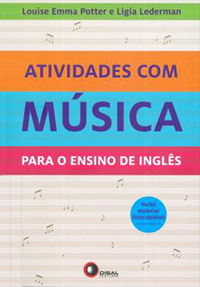By - Renata Chimim

I have been teaching reading to English Language Learners (ELLs) since the first time I stepped foot in a classroom. At that time, more than 20 years ago, I would follow whatever the teachers’ guide would say and that usually included warm-up, pre-teach vocabulary, comprehension questions based on skimming and scanning. Some years later, after studying more about it, reading several professional books and attending many professional development courses, I learned that teaching reading goes beyond those steps, especially if we are focusing on literacy.
Teaching reading encompasses a wide variety of elements to cover reading comprehension. Having that in mind, in my opinion, we cannot talk about reading comprehension without mentioning reading strategies and reading skills. More recently, I have noticed that most teachers use the two words interchangeably as if they were synonyms. Even some researchers and authors use the terms strategy and skill differently. Let us have a look at the definition of these two words by The Literacy Dictionary (Harris & Hodges, 1995), a commonly used reading reference:
strategy n. in education, a systematic plan, consciously adapted and monitored, to improve one’s performance in learning. (p. 244)
skill n. 1. an acquired ability to perform well; proficiency. Note: The term often refers to finely coordinated, complex motor acts that are the result of perceptual motor learning, such as handwriting, golf, or pottery. However, skill is also used to refer to parts of acts that are primarily intellectual, as those involved in comprehension or thinking. (p. 235)
In accordance with this definition, in the present article, I am going to focus on reading strategies as being “deliberate, effortful and purposeful action a reader takes to accomplish a task or skill“ (Serravallo 2010, 11-12). Therefore, strategies will be mentioned as means to make the work of reading visible. According to Serravallo (2015, 8), “teachers can offer strategies to students to put the work in doable terms for those who are still practicing, so that they may become more comfortable and competent with the new skill”.
A reading strategy is a temporary scaffold and it is a means to an end (Duke 2014; Keene 2008). Serravallo (2015) adds that once students are skilled, the strategy becomes automatic and the scaffold can be removed.
So how should I plan my reading lesson? You should always begin your planning by:
1. Having your goal in mind.
2. Choosing the skill you want to focus on according to the standards or scope and sequence you are following.
3. Choosing a strategy that can help your students understand and practice the reading skill (one same strategy may be used to teach different skills under different goals).
So what exactly are reading strategies and reading skills? Let’s take a look at some examples based on comprehension goals in fiction/literature:
Goals in Fiction/Literature - plot & setting; character; vocabulary & figurative language; themes & ideas
Reading Skills: retelling; summarizing; determining importance; visualizing; monitoring for meaning; inferring; questioning; supporting ideas with evidences; comparing and contrasting; cause and effect; synthesizing, word choice; activating prior knowledge
Reading Strategies: picture walking; analyzing the title; finding the problem and solution; looking at the characters’ reactions or feelings; thinking about the topic; creating a mental picture; analyzing the book cover; paying close attention to the first words of the chapter or to the pictures; paying attention to the verb tenses; drawing a map; thinking of questions; considering the historical and social information; putting yourself in the characters’ shoes; looking for patterns; role-playing characters; paying attention to the narrator’s words; using a diagram and charts; making a list; analyzing the interactions; rereading parts of the story; making connections; understanding multiple meaning words; etc.
Were you able to notice the difference? So, going back to the question in the title, the answer is: you should teach a reading skill by using a reading strategy to help students reach the goal. Once students learn the strategies they can use for each purpose, you don’t have to focus on that anymore because they will be able to do it by themselves. REMEMBER: the reading strategies are the means (HOW) to learn the skills (WHAT).
Once you include these elements in your reading lesson plans, the learning goals will become more visible to students and they will clearly understand the tools they need to use in each situation for a better understanding of the text inside and outside the classroom.
REFERENCES:
Duke, N. (2014). Inside information: Developing Powerful Readers and Writers of Informational Text Through Project-Based Instruction. Scholastic.
Harris, T., & Hodges, R. (1995). The Literacy Dictionary: The Vocabulary of Reading and Writing. Newark, DE: International Reading Association.
Keene, E. O. (2008). To understand: New Horizons in Reading Comprehension. Heinemann Educational Books.
Serravallo, J. (2010). Teaching Reading in Small Groups: Differentiated Instruction to Building Strategic, Independent Readers. Heinemann Educational Books.
Serravallo, J. (2015). Reading Strategies Book. Heinemann Educational Books.
BIO:
Renata Chimim holds a degree in Languages (English & Portuguese) and a degree in Pedagogy, an M.A. in Applied Linguistics and Language Studies, and an MBA in Ed. Leadership. She also holds a CELTA and a TESOL certificate. Renata has been a Teacher Trainer and an Educator for more than 20 years in Brazil and in the U.S., with experience as a Pedagogical Coordinator too. She is a Reading Support Teacher and has experience with ELLs (English Language Learners) in language centers, regular public & private schools, university, bilingual, international, and American schools. She is also an ELT Author, Materials Writer, and Editor with several publications in Brazil. Renata is the founder of Chimim Learning Hub, a company that aims at empowering teachers to have a successful career in education and to create successful language lessons.
You can follow her on Instagram @chimim.learninghub and contact her at renata@chimimlearninghub.com
LIVRO RECOMENDADO
